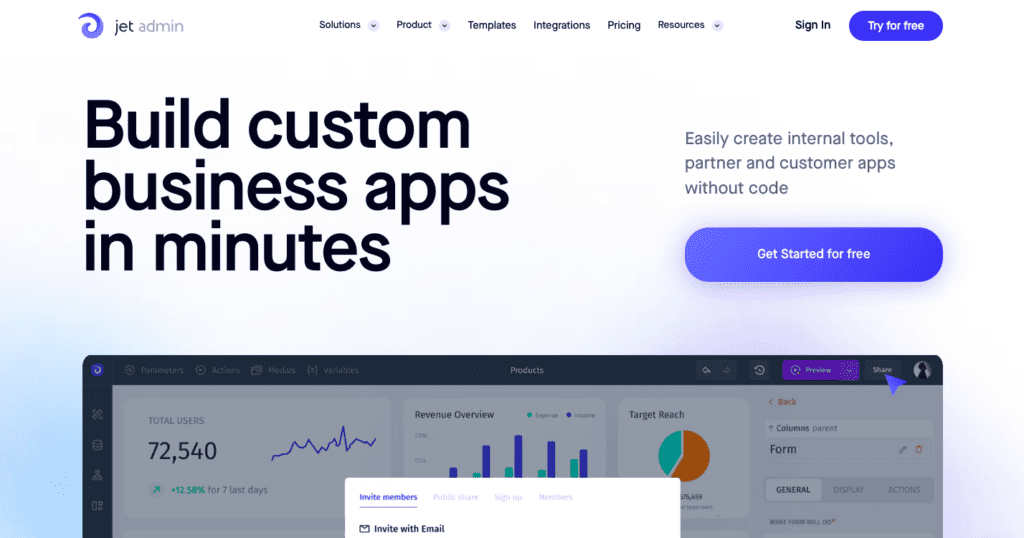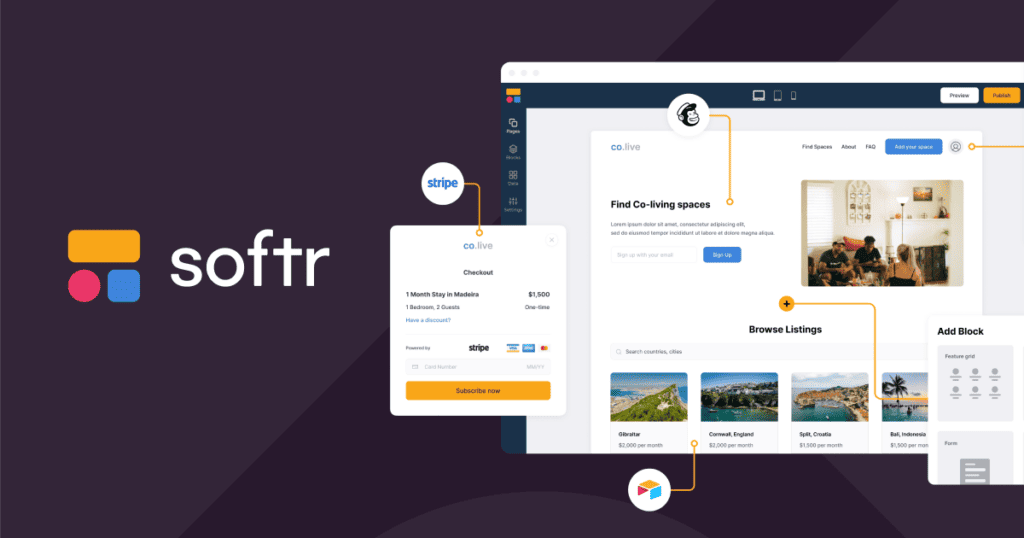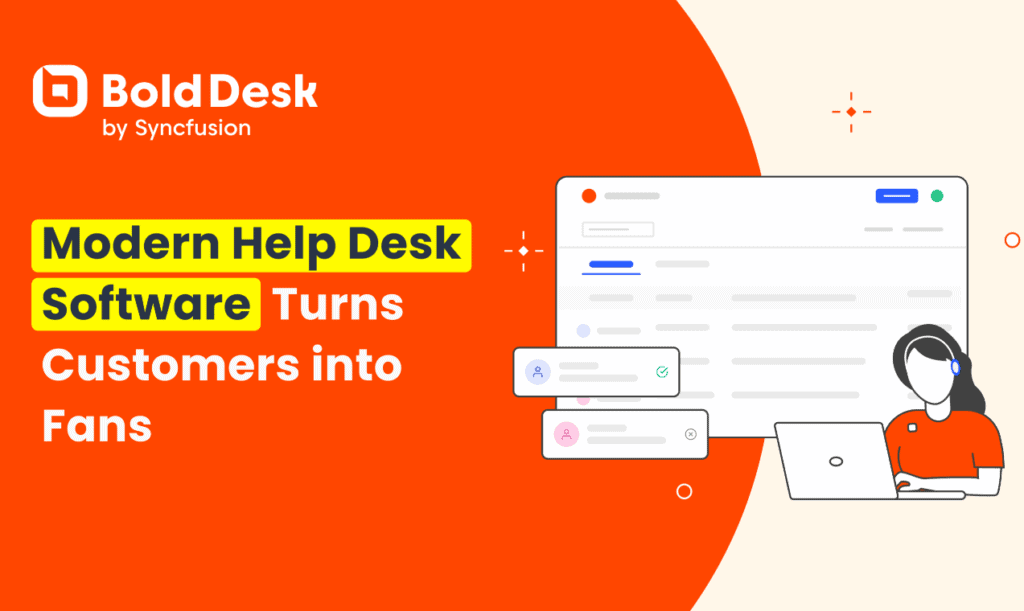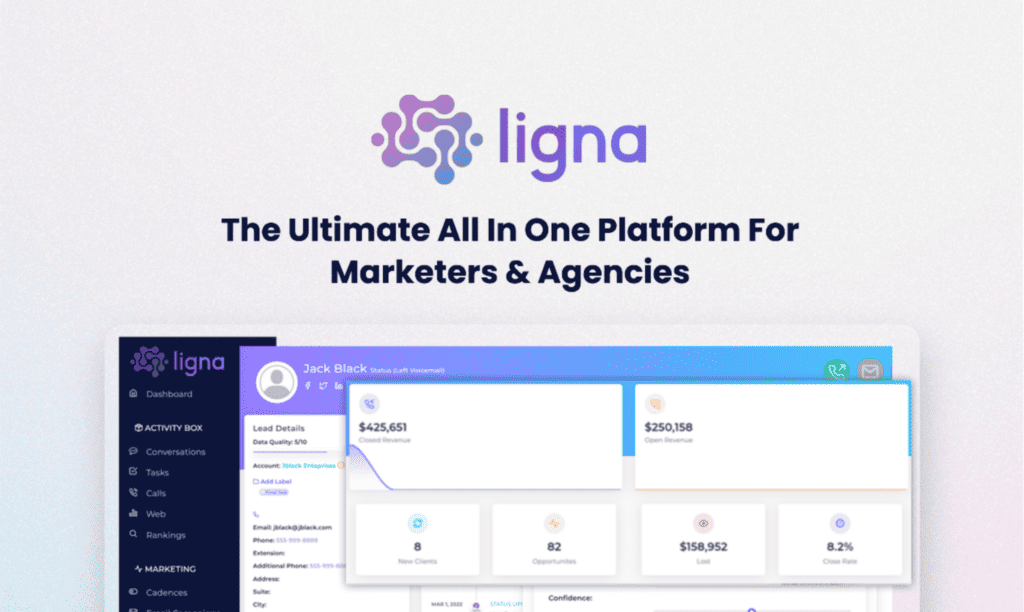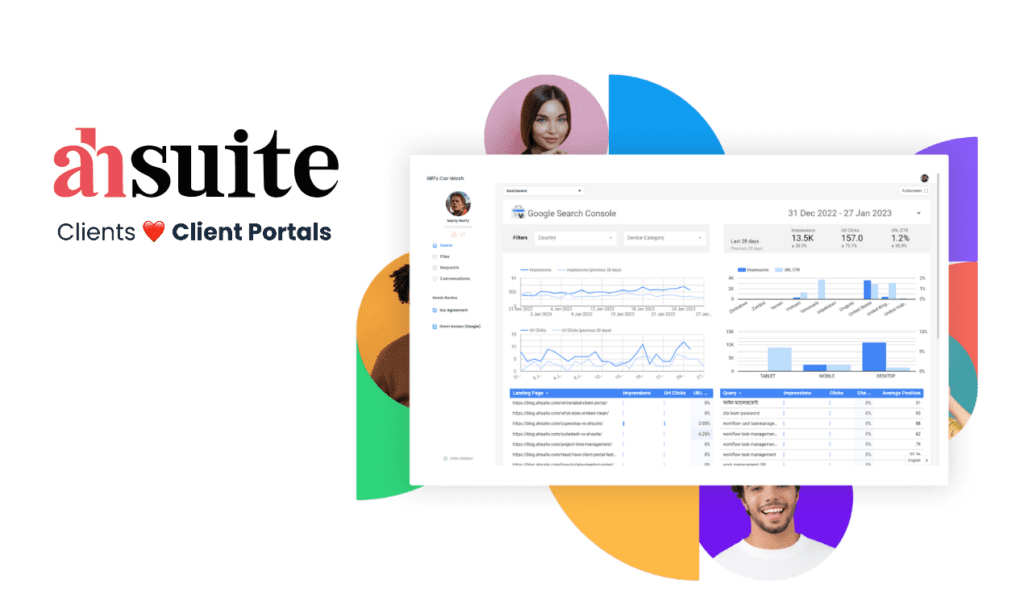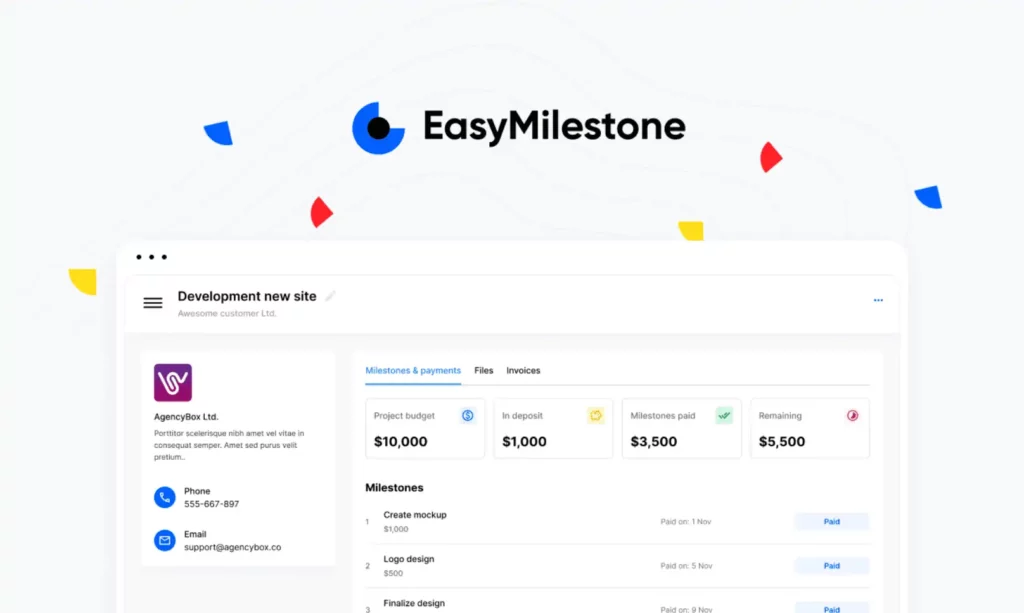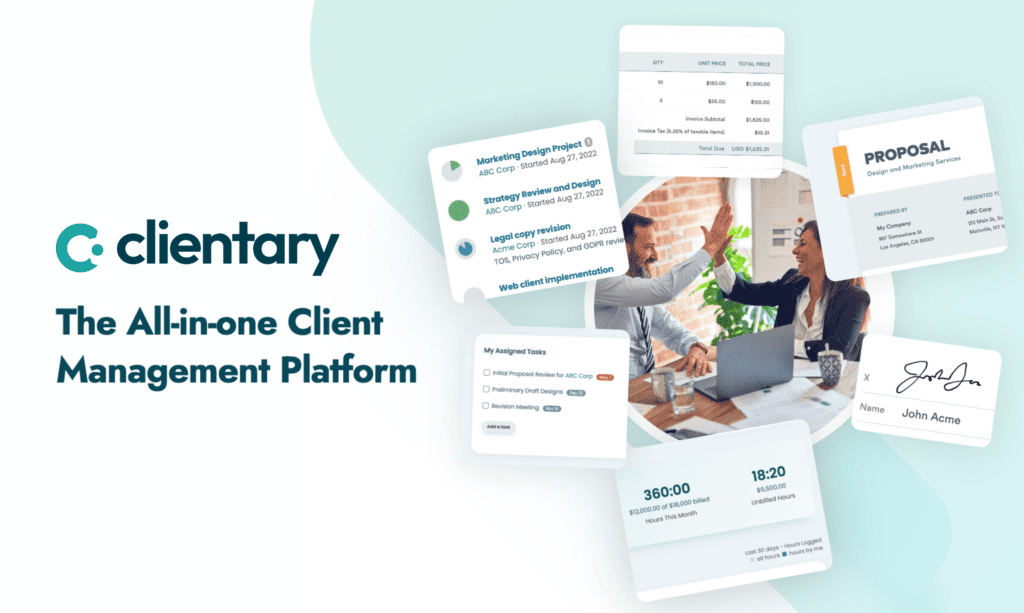SuperOkay
Read more about SuperOkay

Client portal software can transform the way your business operates, offering a centralized platform for client management and communication. By integrating a client portal solution into your business, you provide your clients with a secure, dedicated space where they can access important information, communicate with you directly, and manage their projects and documents. This not only streamlines your workflow but also enhances the overall client experience.
With a client portal solution, you’re not just improving efficiency; you’re also building trust. Clients appreciate the transparency and ease of access to their projects and documents. This digital collaboration tool allows for real-time updates and feedback, reducing misunderstandings and fostering a stronger client-business relationship. Additionally, having all your client interactions and documents in one place reduces the risk of data loss and miscommunication.
Implementing client portal software also means you can offer services around the clock without additional staffing costs. Clients can log in at their convenience to check updates, upload files, or communicate with you, which means your business is always on, even when your office is closed. This 24/7 accessibility significantly enhances client satisfaction and can set you apart from competitors.
Lastly, a client portal solution is not just about external benefits; it also streamlines internal operations. By having a centralized system, your team can work more cohesively, accessing the same up-to-date information and reducing the time spent on administrative tasks. This allows your team to focus more on delivering quality service and less on managing communications and documents.
At its core, client portal software is a technological solution designed to streamline the way businesses manage client interactions. It acts as a bridge between your internal teams and your clients, providing a single point of access for all communications, documents, and project updates. This digital platform simplifies client management by organizing and centralizing key information and interactions in one secure location.
By implementing client portal software, businesses can significantly enhance their efficiency and client service. The software allows for better management of client relationships by facilitating easier access to information, improving communication, and ensuring that both you and your clients are always on the same page. Whether it’s sharing documents, scheduling meetings, or providing updates on projects, client portal software makes these tasks more manageable and more transparent.
Client portal software is a digital platform designed to facilitate secure, efficient interactions between a business and its clients. It serves as a centralized location where clients can access project details, communicate with the team, and manage their documents. The primary purpose of client portal software is to streamline client management by making information exchange more straightforward and more secure.
This type of software enhances the client experience by offering them direct access to the information they need, when they need it. It also simplifies the business’s operations by consolidating client communications, documents, and project updates into one accessible and manageable space. By doing so, it helps in building trust and transparency between the business and its clients, which are crucial components of a successful client-business relationship.
When choosing a client portal solution, it’s crucial to look for certain key features that ensure the security and efficiency of your client interactions. First and foremost, bank-level encryption is a must to protect sensitive information from unauthorized access. Additionally, the ability for clients to upload files easily and securely is essential for smooth document management.
Moreover, a client portal solution should include mobile apps to provide clients with access to their information on the go. Projects and deliverables tracking is another critical feature, enabling both you and your clients to stay up-to-date with the progress of work. These features not only enhance the security and functionality of the client portal but also significantly improve the overall client experience by making processes more streamlined and accessible.
Integrating client portal software into your business operations offers numerous benefits. It not only streamlines administrative tasks but also enhances client satisfaction by providing a more engaging and responsive service. With a dedicated platform for client interactions, you can manage projects more efficiently, communicate more effectively, and build stronger relationships with your clients.
Furthermore, client portal software reduces the need for back-and-forth emails and phone calls, saving time and reducing the potential for miscommunication. By centralizing information and communication, both your team and your clients can access the most current updates, documents, and feedback, leading to smoother project management and a more collaborative working relationship.
Client portals are revolutionizing project management by providing internal teams and clients with a shared space for collaboration. By utilizing project management tools within the client portal, teams can keep all project-related information in one place, making it easier to track progress, manage tasks, and meet deadlines. This level of organization and transparency significantly enhances productivity and project outcomes.
Moreover, having a centralized platform enables internal teams to work more cohesively. Everyone has access to the same information and updates in real-time, which minimizes confusion and ensures that everyone is aligned with the project goals and timelines. This cohesive approach to project management not only streamlines processes but also improves the overall quality of work delivered to clients.
The ability to manage documents online is a critical component of client portal software. With document management capabilities, businesses can securely store, share, and manage files all in one place. This eliminates the need for cumbersome email attachments and physical documents, making the exchange and revision of documents more efficient and less prone to errors.
Clients appreciate the convenience of accessing, reviewing, and approving documents online. This seamless integration of document management into the client portal enhances the client experience by making it easier for them to stay involved and informed about their projects. It also ensures that both parties always have access to the latest versions of documents, which is crucial for maintaining accuracy and consistency.
Digital collaboration through client portals opens up new avenues for enhancing client communication. By providing a dedicated space for interactions, businesses can ensure that communication with clients is more structured, timely, and effective. This digital platform allows for real-time updates, feedback, and discussions, which fosters a more collaborative and engaged relationship with clients.
Moreover, client portals help in reducing the clutter and confusion often associated with email communication. By having a centralized location for messages and updates, both clients and businesses can easily track conversations and decisions made throughout the project. This level of organization and accessibility significantly improves the clarity and efficiency of client communication.
Security and compliance are paramount when it comes to client portal software. Businesses need to ensure that their client data is protected with the highest levels of security to maintain trust and meet regulatory requirements. This includes implementing robust encryption methods, secure login processes, and regular security audits to safeguard sensitive information.
Compliance is another critical aspect, as businesses must adhere to industry-specific regulations and standards. Client portal software should facilitate this by providing features that support compliance efforts, such as secure document storage, audit trails, and data protection measures. By prioritizing these aspects, businesses can ensure their client portals are not only effective but also secure and compliant with relevant laws and standards.
Bank-level security is essential for any client portal software to protect sensitive client information from unauthorized access or breaches. This level of security typically involves advanced encryption technologies, secure data storage solutions, and stringent access controls. By implementing these measures, businesses can assure their clients that their data is safe and secure, which is crucial for maintaining trust and confidence.
Moreover, regular security assessments and updates are vital to staying ahead of potential threats. Businesses should ensure their client portal software is regularly reviewed and updated to address new security challenges and vulnerabilities. This proactive approach to data protection not only safeguards client information but also reinforces the business’s commitment to security and privacy.
Compliance with legal and industry standards is a critical aspect of managing a client portal. The right client portal software makes it easier for businesses to adhere to these guidelines by incorporating features that support compliance. This includes secure handling and storage of data, providing audit trails for document and communication exchanges, and ensuring that data protection practices meet or exceed regulatory requirements.
Effortlessly meeting compliance guidelines not only protects the business from legal risks but also builds trust with clients. They can have peace of mind knowing that their information is managed in a manner that respects privacy laws and industry standards. This commitment to compliance is an essential part of maintaining a reputable and trustworthy client portal.
Finding the right client portal software involves considering how well a solution can streamline communication, manage documents, and enhance client relationships. The best solutions offer a secure cloud environment, dedicated client portals, and a user-friendly interface. They also integrate seamlessly with existing systems, provide workflow management tools, and may include a wordpress plugin for easy website integration. Evaluating these features helps identify a management solution that aligns with your business needs and goals.
SuiteDash is an all-in-one solution that stands out for its comprehensive approach to client management. It combines document management, project tracking, and client communication into a single platform, making it easier for businesses to manage their client relationships effectively. The software is designed to streamline operations, from onboarding clients to managing ongoing projects.
As an all-in-one solution, SuiteDash provides a range of tools and features that are tailored to enhance the efficiency and productivity of businesses. Its user-friendly interface ensures that both your team and your clients can navigate the platform easily, fostering better communication and collaboration. By consolidating multiple functions into one platform, SuiteDash simplifies the management of client interactions, making it an ideal choice for businesses looking to improve their client portal experience.
Clinked is a cloud-based collaboration platform that stands out for its ability to create secure file storage and project groups, enabling teams to collaborate efficiently. Its customizable nature allows businesses to tailor the portal to their specific needs, enhancing project management and team interaction. The focus on secure collaboration ensures that sensitive information is well-protected, making it a trusted choice for businesses looking for a reliable client portal solution.
With Clinked, you can set up various project groups, allowing for streamlined communication and document sharing within your team and with clients. This feature not only promotes productivity but also fosters a sense of community among project members. The platform’s intuitive design ensures that even those with minimal technical knowledge can navigate and utilize its features effectively, making team collaboration more accessible than ever.
Freshdesk enables businesses to offer top-notch customer support through a branded client portal, where clients can easily submit and track tickets. This streamlined approach to customer service helps in quickly addressing client concerns, boosting overall customer satisfaction. The customization options available allow businesses to design the portal in a way that reflects their brand, creating a consistent and professional image.
The platform’s intuitive interface ensures that clients can navigate the portal with ease, making it simpler for them to find the information they need or get in touch with support staff. By centralizing customer support requests, Freshdesk makes it easier for businesses to manage and respond to client needs effectively, enhancing the customer experience and fostering loyalty.
Zendesk offers a streamlined solution for businesses looking to enhance customer engagement through a dedicated client portal. This platform allows customers to find answers to their questions, submit support tickets, and track their resolution progress, all in one place. Zendesk’s focus on simplifying customer interaction makes it a favorite among businesses aiming to improve their service quality and responsiveness.
The user-friendly design of Zendesk’s client portal ensures that customers have a hassle-free experience when seeking support or information. This ease of use, combined with the platform’s robust features, helps businesses build stronger relationships with their clients, making Zendesk a key tool in the quest for enhanced customer satisfaction and loyalty.
Client Portal (WordPress) is a powerful plugin that allows you to create a customer portal in minutes, seamlessly integrated with your WordPress site. This tool is perfect for businesses that require a simple yet effective way to manage customer interactions, documents, and projects. With Client Portal, clients can access their own secure area on your website, where they can find all relevant information and documents related to their projects.
The integration with WordPress means that businesses can leverage their existing website to streamline workflow and improve customer service without the need for complex technical setups. The ability to customize the portal to match your brand assets, including colors and logos, ensures a consistent brand experience for your clients. This ease of use and customization makes Client Portal an excellent choice for businesses looking to enhance their client engagement through their WordPress websites.
Zoho CRM offers secure client portal software that enables businesses to strengthen their customer relationships. Through these portals, clients can update their own information, track their interactions with your company, and access relevant documents, all in a secure environment. This level of access and control not only improves customer experiences but also streamlines communication between your business and your clients.
The secure portals provided by Zoho CRM are designed with privacy and data protection in mind, ensuring that your clients’ information remains safe. By offering these personalized and secure interaction spaces, Zoho CRM helps businesses build trust with their clients, fostering stronger and more loyal relationships.
MyDocSafe is a versatile platform that specializes in secure document management and e-signature solutions. It streamlines approval processes and contract signing, making it easier for businesses to manage documents securely and efficiently. The platform’s focus on security ensures that sensitive documents are protected throughout the signing process, giving businesses and their clients peace of mind.
Beyond just e-signatures, MyDocSafe enhances onboarding processes by automating and securing the intake of new client information and necessary documents. This not only saves time but also significantly reduces the risks associated with handling sensitive data. MyDocSafe is an essential tool for businesses looking to improve their document management and onboarding processes with security and efficiency in mind.
SuperOkay offers interactive portals with a custom domain, tailored specifically for creative professionals and their teams. The platform stands out by providing a unique space for collaboration and project management, designed to cater to the needs of designers, marketers, and other creative roles. By allowing internal users to interact and share feedback within a secure environment, SuperOkay enhances the creative process and project delivery.
The ability to customize portals to reflect the brand identity of a creative business adds a professional touch to client interactions. SuperOkay’s focus on streamlining the creative workflow, along with its robust features for project management and collaboration, makes it an invaluable tool for creative teams aiming to improve their project outcomes and client satisfaction.
When choosing the right client portal software, it’s crucial to consider factors like sensitive data handling, customer satisfaction, and data security. The right customer portal software should offer robust management systems with access controls, data backup, and customization options to enhance the client experience. These features ensure that your business can protect client information while providing a personalized and engaging portal experience.
Additionally, customer engagement and management system capabilities play a significant role in selecting a portal. The software should not only secure your sensitive data but also provide a platform that encourages client interaction and feedback. By prioritizing these elements, you can select a client portal solution that meets your business needs and enhances your client relationships.
When evaluating client portal solutions, it’s essential to consider the specific needs of your business and how a client portal solution can meet those needs. Factors such as ease of use, integration capabilities, and the level of customer support offered by the software provider are critical. Additionally, the security features and the ability to customize the portal to fit your brand identity should also influence your decision.
Cost-effectiveness and scalability are other important considerations, ensuring that the chosen solution can grow with your business without becoming a financial burden. By carefully assessing these factors, you can choose a client portal solution that enhances your operational efficiency and improves client satisfaction.
To effectively evaluate your business needs against software features, start by identifying the key processes that could benefit from a client portal, such as content management and client communication. Consider the number of users who will need access to the portal and the level of customization required to align with your business operations.
Next, examine the software features in detail, focusing on how they can streamline your workflows and improve client interactions. It’s also important to consider the software’s scalability and its ability to integrate with other tools you’re currently using. By aligning your business needs with the features offered by client portal software, you can ensure a more efficient and productive implementation.
To ensure a smooth rollout of your new client portal software, start with a detailed plan that includes a timeline, key milestones, and assigned responsibilities. Engage stakeholders early in the process to gather input and build support for the project. It’s also crucial to choose a phased approach, starting with a pilot group before a full-scale launch, to identify and address any issues early on.
Clear communication with both your team and your clients about the benefits and usage of the portal is essential for successful adoption. Provide comprehensive training and support materials to help users navigate the new system confidently. By following these best practices, you can facilitate a smooth transition to your new client portal software and maximize its benefits for your business.
Training is a critical component of successfully implementing a new client portal. Begin by developing tailored training sessions for your team, focusing on how the portal fits into your existing workflows and how to manage client interactions through the platform. Use real-world scenarios to illustrate common tasks and challenges, ensuring that your team is well-prepared to support clients.
For clients, offer easy-to-understand guides and tutorials that highlight the portal’s benefits and key features. Consider hosting webinars or live Q&A sessions to address any questions and encourage portal usage. Continuous feedback and support will help identify areas for improvement, ensuring that both your team and your clients can make the most out of the new portal.
To truly maximize the benefits of your client portal, it’s crucial to encourage active engagement from your clients. Start by making the portal user-friendly and accessible via mobile devices. Highlight features that offer convenience, like the ability to access documents anytime, anywhere. Regular updates and adding valuable content will keep your clients coming back. Consider integrating interactive elements such as feedback forms or discussion forums to foster a sense of community and open lines of communication.
Another effective strategy is to utilize client onboarding processes that introduce new users to the portal’s features and benefits. Educate your clients on how using the portal can save them time and enhance the security of their sensitive data. Personalized training sessions or tutorial videos can significantly improve client comfort and confidence in using the portal, leading to increased engagement and satisfaction.
One of the key advantages of client portal software is the ability to create unlimited, customizable client portals tailored to the specific needs of different clients. This flexibility allows you to offer a personalized experience for each client, featuring custom branding and relevant functionalities. For instance, a portal designed for sharing medical records would prioritize document security and compliance, while a portal for project collaboration might focus on project management software tools and real-time updates.
Leveraging this capability requires understanding your clients’ unique needs and preferences. By offering tailored portals, you not only enhance client satisfaction but also improve operational efficiency. For businesses, this means streamlined processes and better management of client interactions. For clients, it means a more relevant and secure way to communicate, share files, and manage projects. Customizable portals also reinforce your commitment to meeting client needs, thereby strengthening business and client relationships.
When it comes to client portals, several frequently asked questions arise, focusing on functionality, security, and ease of use. Users often inquire about how they can securely share sensitive data, the types of security measures in place, and how to access documents from a mobile device. Providing clear, concise answers to these questions can help alleviate concerns and build trust in the portal’s capabilities. It’s also beneficial to include information on data backup procedures and audit trails to ensure users that their data is protected and monitored.
Another common query revolves around customizing the portal to fit brand identity, which highlights the importance of offering a customizable client portal. Addressing these questions in an easily accessible FAQ section not only helps in educating your clients but also reduces the workload on your support team by providing instant answers to common queries.
Securing your clients’ data and earning their trust begins with implementing bank-level security measures. This includes encryption, secure access protocols, and regular security audits to protect sensitive data. Be transparent with your clients about the security practices you have in place and how their data is being protected. Additionally, ensure that your portal complies with relevant security and compliance standards, providing peace of mind to your clients and reinforcing their trust in your portal.
Engaging in transparent communication regarding any updates or changes in security measures further solidifies trust. Offering education on best practices for data protection, such as using strong passwords and recognizing phishing attempts, can empower your clients to contribute to the overall security of their data. Ultimately, maintaining a secure client portal is an ongoing commitment to your clients’ privacy and trust.
As technology evolves, so do the trends in client portal software. Future developments are likely to include more advanced artificial intelligence (AI) capabilities for personalized user experiences and predictive analytics. Imagine a portal that not only understands your specific needs but also anticipates them, offering solutions before you even have to ask. Integration with more third-party services and mobile apps is also expected to enhance functionality, allowing users to have a seamless experience across different platforms.
Another trend is the emphasis on enhanced security features, such as biometric access controls and more sophisticated encryption techniques, to protect sensitive data against evolving cyber threats. As businesses and their clients increasingly rely on digital collaboration, the demand for secure, efficient, and user-friendly client portals will continue to grow, driving innovation in the sector.
Client portals are revolutionizing the way businesses operate, breaking down communication barriers and streamlining processes. By providing a central location for document sharing, project collaboration, and communication, these portals are enhancing efficiency and transparency between businesses and their clients. They enable real-time updates and access to critical information, reducing the need for back-and-forth emails and meetings. This shift towards digital collaboration is not only improving project management but also client satisfaction, as expectations for quick and easy access to information are met.
The ability to customize portals to specific client needs and integrate them with existing systems is further transforming business operations. These tailored solutions allow businesses to offer a more personalized service, improving client engagement and loyalty. As client portals become more embedded in business operations, their impact on productivity, client relationships, and overall success will continue to grow.
Choosing the right client portal software for your business involves careful consideration of your specific needs and goals. Start by evaluating the essential features you require, such as document storage and secure file sharing, customizable templates, and mobile app integration. Consider the software’s scalability and its ability to support your business as it grows. Security is another critical factor; ensure that the software offers bank-level security to protect your and your clients’ sensitive data.
It’s also important to assess the software’s user interface and ease of use from both your team’s and your clients’ perspectives. A system that is difficult to navigate can deter users, reducing the potential benefits of your client portal. Seeking feedback from current users and taking advantage of free trials can provide valuable insights into the software’s functionality and suitability for your business needs.
Implementing a secure client portal can significantly enhance your business operations and client relationships. It offers a centralized platform for communication, document sharing, and project management, streamlining workflows and increasing efficiency. To maximize the benefits, focus on creating a user-friendly experience with features like customizable color schemes, easy navigation, and mobile device access. Ensure that your portal provides secure access and document security to protect sensitive information and maintain client trust.
Regularly updating the portal with new features and information will keep clients engaged and satisfied with the service. Additionally, leveraging analytics tools within your portal can provide insights into client behavior and preferences, enabling you to tailor your services and improve client satisfaction further. By prioritizing security, customization, and user experience, your client portal can become a powerful tool in enhancing business operations and strengthening client relationships.
Choosing the right client portal software can transform the way you interact with your clients and manage your business. With the right customer portal software, you can enhance client satisfaction by providing a professional portal that streamlines external projects and facilitates smoother communication. These systems come with customization options that allow you to tailor the portal to fit the unique needs of your clients and staff. This level of personalization not only boosts customer engagement but also strengthens client relationships, laying the foundation for long-term loyalty.
Moreover, a robust management system with advanced access controls and collaboration tools safeguards data security while allowing efficient data sharing between you, your clients, and external stakeholders. Clients can upload documents securely, and service providers can share valuable insights, enhancing the customer journey and ensuring data protection. By implementing a client portal software that focuses on data security and offers a wide array of customization options, you’re not just investing in a basic client portal; you’re elevating your business operations to meet the evolving needs of your clients and the market.


